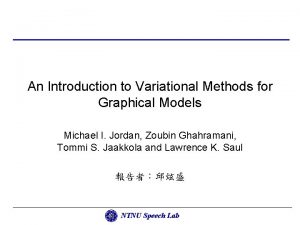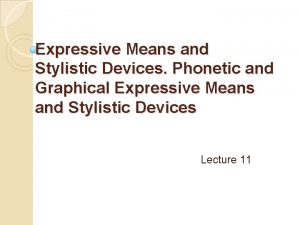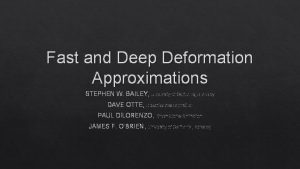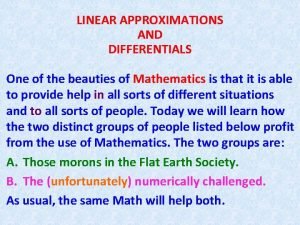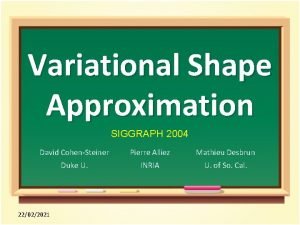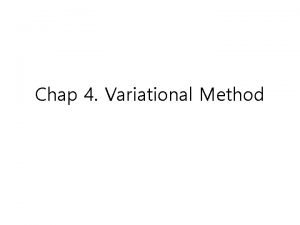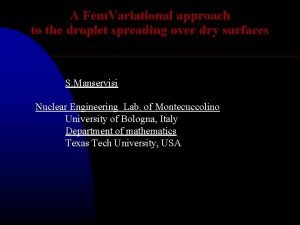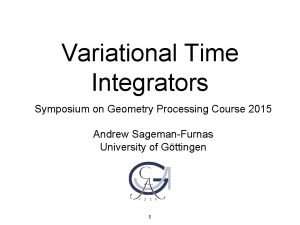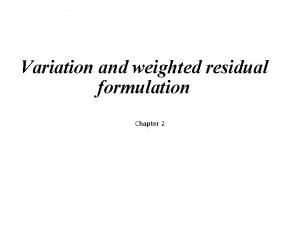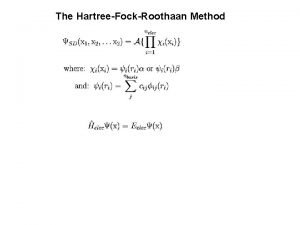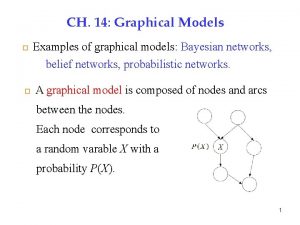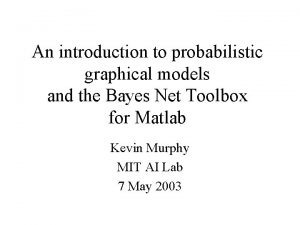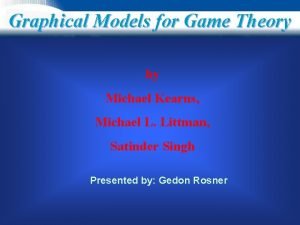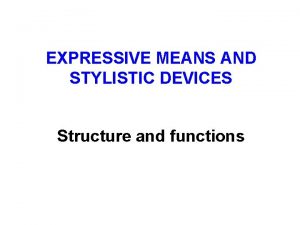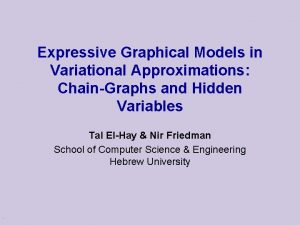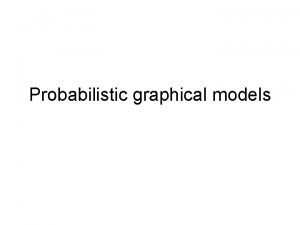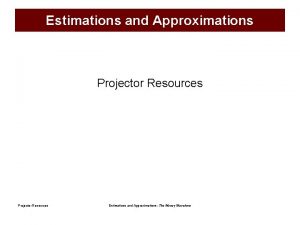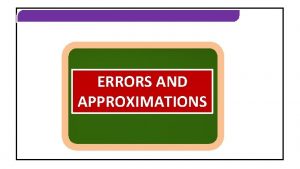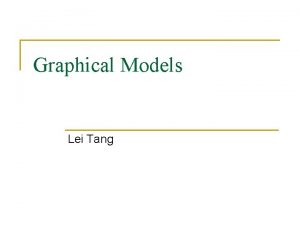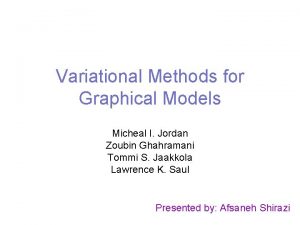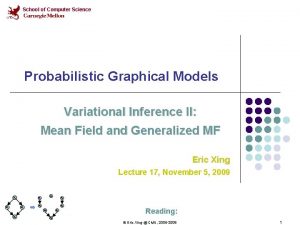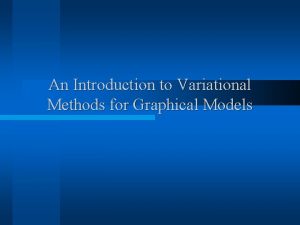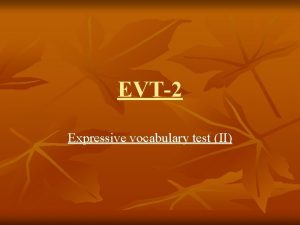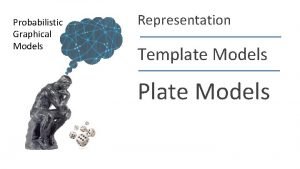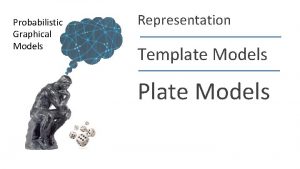Expressive Graphical Models in Variational Approximations ChainGraphs and







![Outline u Structured variational approximations [review] u Using chain-graphs u Adding hidden variables u Outline u Structured variational approximations [review] u Using chain-graphs u Adding hidden variables u](https://slidetodoc.com/presentation_image_h2/8ec22e2daa376428955e024b535f4f85/image-8.jpg)

![Structured Approximations Goal: Maximize the following functional KL Distance 0 F[Q] is a lower Structured Approximations Goal: Maximize the following functional KL Distance 0 F[Q] is a lower](https://slidetodoc.com/presentation_image_h2/8ec22e2daa376428955e024b535f4f85/image-10.jpg)












- Slides: 22

Expressive Graphical Models in Variational Approximations: Chain-Graphs and Hidden Variables Tal El-Hay & Nir Friedman School of Computer Science & Engineering Hebrew University .

Inference in Graphical Models Exact Inference · NP-hard, in general · Can be efficient for certain classes What do we do when exact inference is intractable? Resort to approximate methods · Approximate inference is also NP-hard · But, specific approximation methods work for specific classes of models Need to enrich approximate methods

Variational Approximations u Approximate the posterior of a complex model using a simpler distribution u Choice of a simpler model method : Mean field, Structured approximations, and Mixture models

Variational Approximations u Approximate the posterior of a complex model using a simpler distribution u Choice of a simpler model method : Mean field, Structured approximations, and Mixture models

Variational Approximations u Approximate the posterior of a complex model using a simpler distribution u Choice of a simpler model method : Mean field, Structured approximations, and Mixture models

Variational Approximations u Approximate the posterior of a complex model using a simpler distribution u Choice of a simpler model method : Mean field, Structured approximations, and Mixture models

Enhancing Variational Approximations Basic tradeoff: accuracy complexity Goal: New families of approximating distributions better tradeoff
![Outline u Structured variational approximations review u Using chaingraphs u Adding hidden variables u Outline u Structured variational approximations [review] u Using chain-graphs u Adding hidden variables u](https://slidetodoc.com/presentation_image_h2/8ec22e2daa376428955e024b535f4f85/image-8.jpg)
Outline u Structured variational approximations [review] u Using chain-graphs u Adding hidden variables u Discussion

Structured Approximations Target model: Approximation: where
![Structured Approximations Goal Maximize the following functional KL Distance 0 FQ is a lower Structured Approximations Goal: Maximize the following functional KL Distance 0 F[Q] is a lower](https://slidetodoc.com/presentation_image_h2/8ec22e2daa376428955e024b535f4f85/image-10.jpg)
Structured Approximations Goal: Maximize the following functional KL Distance 0 F[Q] is a lower bound on the log likelihood u If Q is tractable then F[Q] might be tractable

Structured Approximations u To characterize the maximum point we define the generalized functional u Differentiation yields the following equation approximates using the lower bound on the local distribution

Structured Approximations Optimization u Asynchronous u Efficient updates guaranties convergence calculation of the update formulas:

Chain Graph Approximations u Posterior distributions can be modeled as chain graphs = where

Chain Graph Approximations u Chain graph distributions: where are potential functions on subsets of T u Generalize both Bayesian networks and Markov networks u A simple approximation example:

Chain Graph Approximations Optimization where

Adding Hidden Variables Potential pitfall: Multi-modal distributions u Jaakkola & Jordan: Use mixture models · Modeling assumption: Factorized mixture components Generalization: Structured approximation with an extra set of hidden variables u Approximating distribution:

Adding Hidden Variables: Intuition u Lower bound improvement potential where I(T; V) is the mutual information u Capture correlations in a compact manner:

Relaxing the lower bound u Rewriting the lower bound on the log-likelihood where u The conditional entropy does not decompose The lower bound is intractable

Relaxing the lower bound u Using the following convexity bound u Introducing u The extra variational parameters relaxed lower bound becomes tractable Lower bound on conditional entropy

Optimization u Bayesian u network parameters: Smoothing parameters: u Asynchronous updates guaranties convergence

KL Bound Results Number of time slices

Discussion u Extending representational features of approximating distributions Better tradeoff ? u Addition of hidden variables improves approximation u Derivations of different methods use a uniform machinery Future directions u Saving computations by planning the order of updates u Structure of the approximating distribution
 An introduction to variational methods for graphical models
An introduction to variational methods for graphical models Graphical expressive means
Graphical expressive means Fast and deep deformation approximations
Fast and deep deformation approximations Fast and deep deformation approximations
Fast and deep deformation approximations Chapter 7 linear programming solutions
Chapter 7 linear programming solutions Variational shape approximation
Variational shape approximation Variational message passing
Variational message passing Variational principle
Variational principle Variational approach in fem
Variational approach in fem Variational calculus
Variational calculus Example of residual formulation
Example of residual formulation Variational principle
Variational principle Variational knowledge graph reasoning
Variational knowledge graph reasoning Graphical model example
Graphical model example An introduction to probabilistic graphical models
An introduction to probabilistic graphical models Graphical models for game theory
Graphical models for game theory Difference between modals and semi modals
Difference between modals and semi modals Informative expressive operative
Informative expressive operative Meaning of lexical
Meaning of lexical Lexical expressive means
Lexical expressive means Katharina reiss text types
Katharina reiss text types Stylistic devices function
Stylistic devices function Graphon stylistics examples
Graphon stylistics examples
